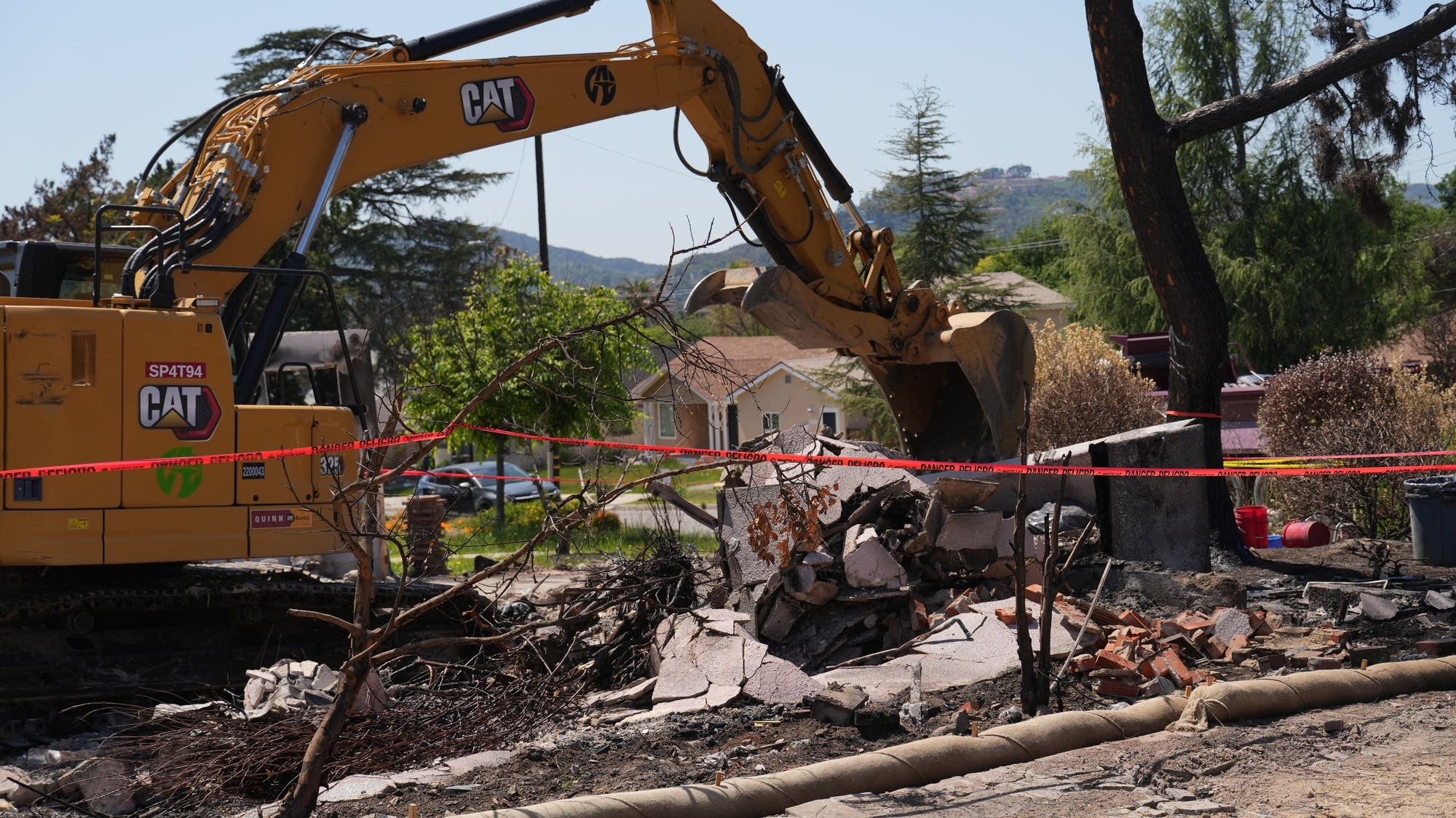
We’ve been following the rebuilding of Altadena, a community in the Los Angeles area, since the January firestorms that destroyed thousands of homes and structures there.
Marketplace’s David Brancaccio is among those rebuilding. So is Waleed Delawari, founder of the Delawari Investment Group, a property development firm in Los Angeles that does home renovations and new construction. He also has a background as a mortgage broker and a contractor.
Brancaccio caught up with Delawari after he reached a milestone in the process: the clearing of debris from his lot. But other milestones will have to be achieved, including various agency approvals. The following is an excerpt of their conversation.
David Brancaccio: How did it feel when they took away the debris? Good or bad?
Waleed Delawari: It felt great because it kind of just allowed us to turn the page. And as a family, we went up there, the kids went out of school. The crew was excellent, we brought them lunch one day as a family. We just let them know how thankful we are for what they’re doing. And so it was a big moment for us, again, to take that next step.
Brancaccio: But you’re running the numbers, for instance, on a somewhat innovative construction approach. It involves plastic that’s very insulated, but it’s modular?
Delawari: So it’s a panel system, it’s 3D paneling, and they come in just large sheets. And it’s like a big Lego. You drop them, connect them to your foundation, and then you add concrete on both the inside and the outside of the home. So you, in a sense, have a 4- or 5-inch structure in the middle that is fire-resistant insulation. And then you have rebar, and then you have about an inch and a half of concrete that’s on both sides. So you have a fairly large, thick wall that is fully fire — I hate to say fireproof, but you know, could withstand a fire.
Brancaccio: What about the roof?
Delawari: The roof is the same material. So the company that we’re using or looking at, what really intrigued me with them is the ability to build the roof and have the high walls, and again, give the home the same aesthetics as if you were building with a wood-frame home. We’re really just flushing out the different ideas because then I could just make a modification to the plans and the structural plans.
Brancaccio: But you don’t think you’re gonna freak them out with this new construction technique?
Delawari: It’s not so much new on our end, it’s been around. The big question is how experienced these guys are in reviewing things like this. And so this is the one opportunity we all have to take a step back and see, is there a better way to build that home? And if it is, what does that mean from a dollars perspective? What does it mean from a value/real estate perspective? And what does it mean from an investment standpoint? And so if we can just have those questions, or if you can be able to communicate with people that have some of those answers, you know, everyone will make their own decision on which direction they’re going to go.
Brancaccio: What are you hearing about building materials? There’s more than 6,000 structures just in this fire that have to be built. It’s a time when we may or may not have tariffs, depending on which day we’re at. There must be a lot of demand, and demand is higher prices.
Delawari: I think, as a builder, the only thing we could do is try to stay ahead of that. Try to figure out as early as possible the direction you’re going to build. You know, all of our lots are dead, open dirt. And so getting containers, buying material in advance, storing it, being strategic with what you can do. The sooner you can have a plan, the better it is.






